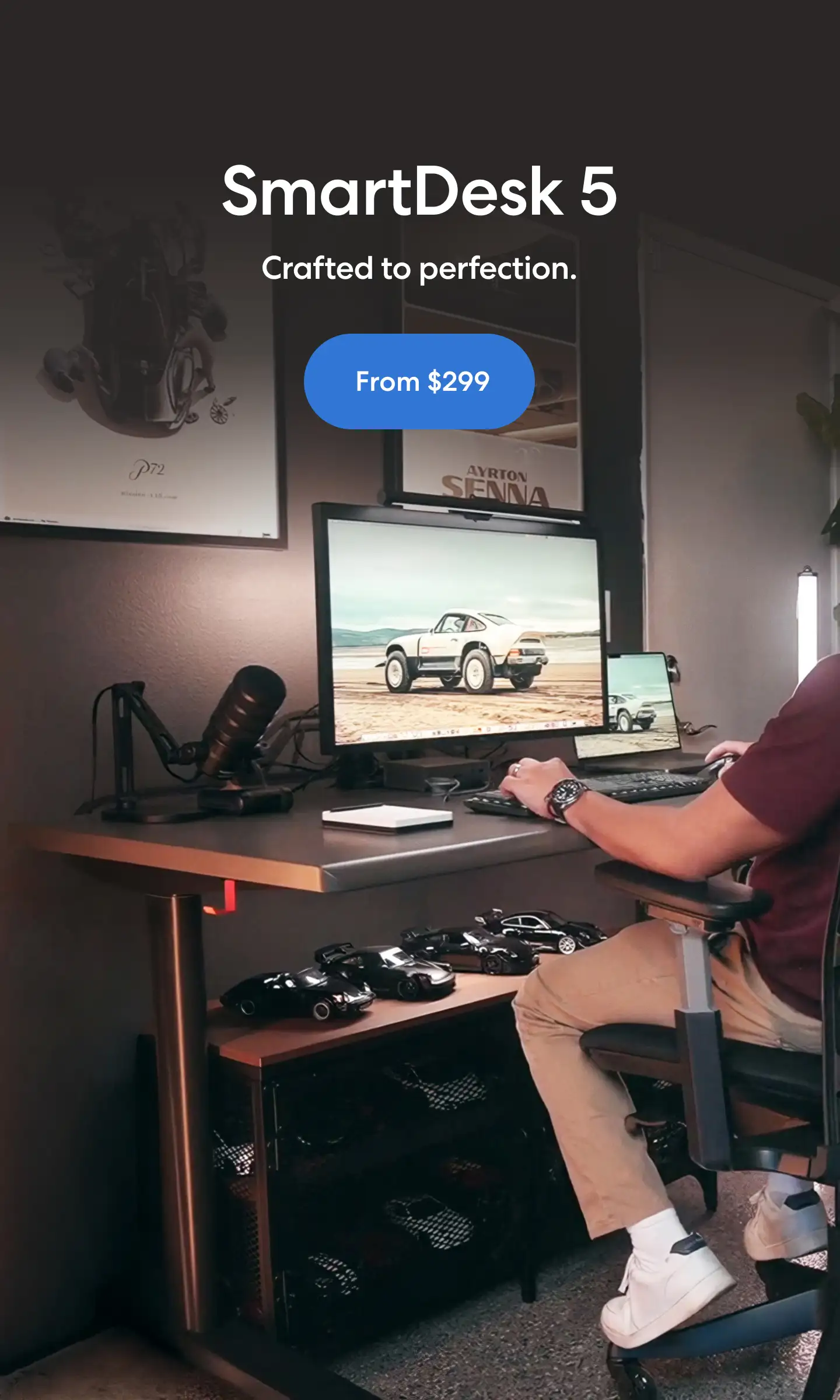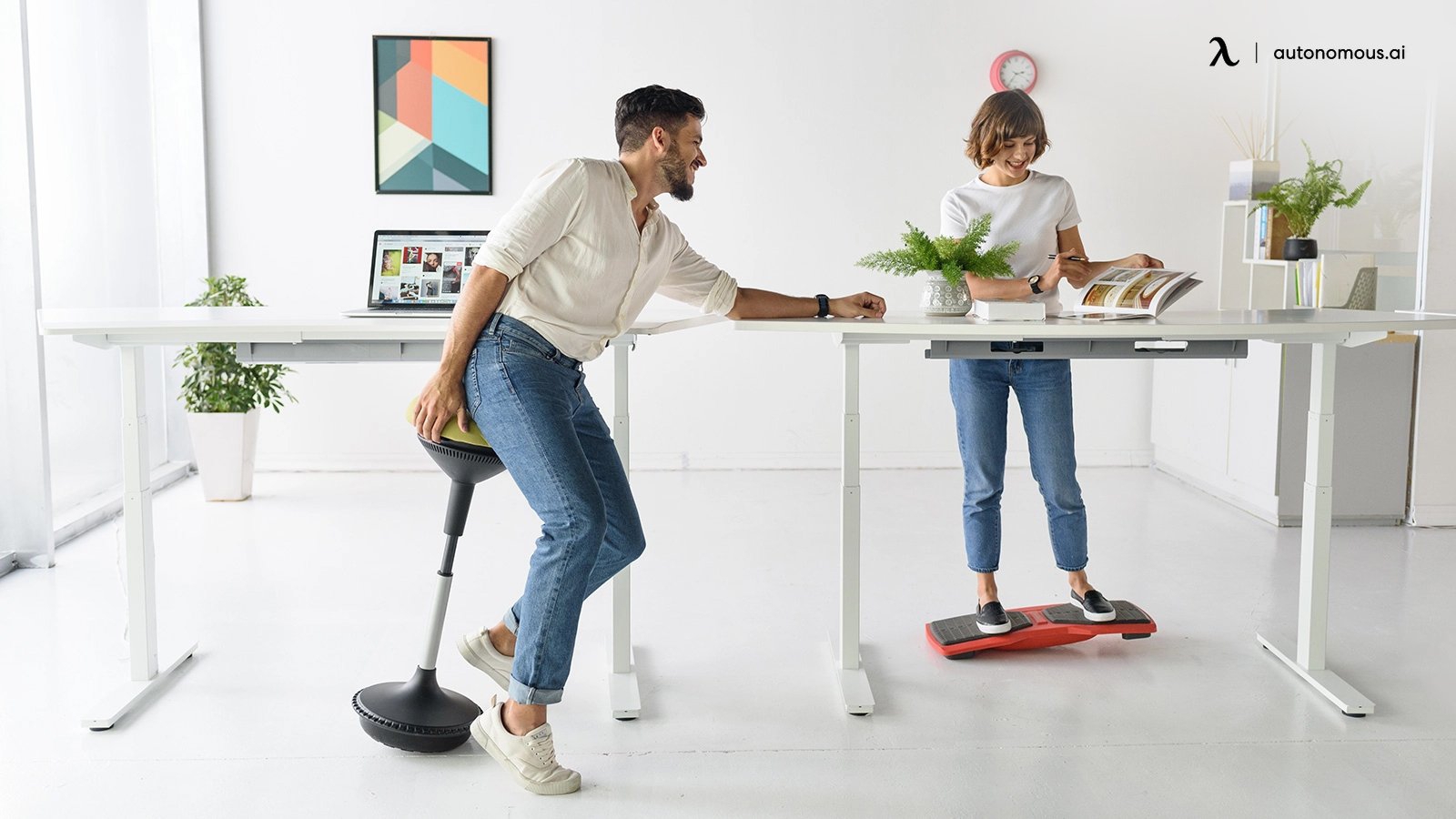
Active Sitting: What is It, How It Works, and Why You Should Try It
Table of Contents
One of the go-to methods for maintaining a healthier lifestyle is to adjust the way you work. Perhaps the most common variation is using a standing desk. While standing instead of sitting can help with some postural issues, it doesn’t necessarily address the sedentary habits that often come with an office job. To get the most out of a standing setup, it’s important to know how to use a standing desk properly to maintain good posture and movement throughout the day.
Another approach some people take is incorporating exercise machines into their workstation. Under-desk ellipticals and standing desks for treadmills allow for motion while working. While effective, they can be inconvenient—constant movement noise, exertion, and even discomfort from long hours of use make them less ideal for many office settings.
Thankfully, there’s a middle ground: active sitting. This method encourages movement while seated, engaging core muscles and promoting better posture without disrupting workflow. If you’re curious about how to stay active at your desk, active sitting provides an excellent balance between movement and comfort. Choosing the right active sitting chair can make all the difference, keeping you engaged and reducing the negative effects of prolonged sitting.
What Is Active Sitting?
Active sitting sounds almost like a buzzword, something made up to keep tired office workers alert during long, boring meetings. “Be active while you’re sitting so your mind stays alert and focused!” In reality, that’s nowhere near the truth.
The truth of active sitting is that it’s a way of sitting that works to engage the muscles in your core much more frequently than you do when you’re sitting in an office chair.
Your core is, well, a core part of your body. Your core muscles include muscles in your back, sides, abdomen, and chest, all of which work in concert to keep your body positioned. When you’re sitting down, most of those muscles don’t need to do any work. Leaning against the back of a chair restricts your posture to conform with the chair’s shape. That’s why an ergonomic office chair is so important, to avoid damage to your spine from a poor posture.
The trouble is, when you’re sitting normally, you’re racking up issues. Your muscles atrophy through lack of use. Your organs slow their function since your body doesn’t need it in a resting state, except for your pancreas. Your pancreas, meanwhile, is happily toiling away, sending insulin throughout your body. This contributes to obesity and, eventually, diabetes.
Active sitting takes on principles of motion that are typical of standing and walking. When you’re standing and walking around, your core muscles are constantly adjusting to keep you upright. It’s all part of your overall balance. Humans are precarious creatures on our two legs, so our bodies are engineered to make micro-adjustments constantly to keep us upright. It’s why very minor problems, like the loss of a little toe or an imbalance in the inner ear, can throw off your entire sense of balance and ability to adjust.
When standing, research shows that we adjust our posture 2-3 times per minute, and more when in motion. That’s a lot of micro-adjustments keeping your core active.
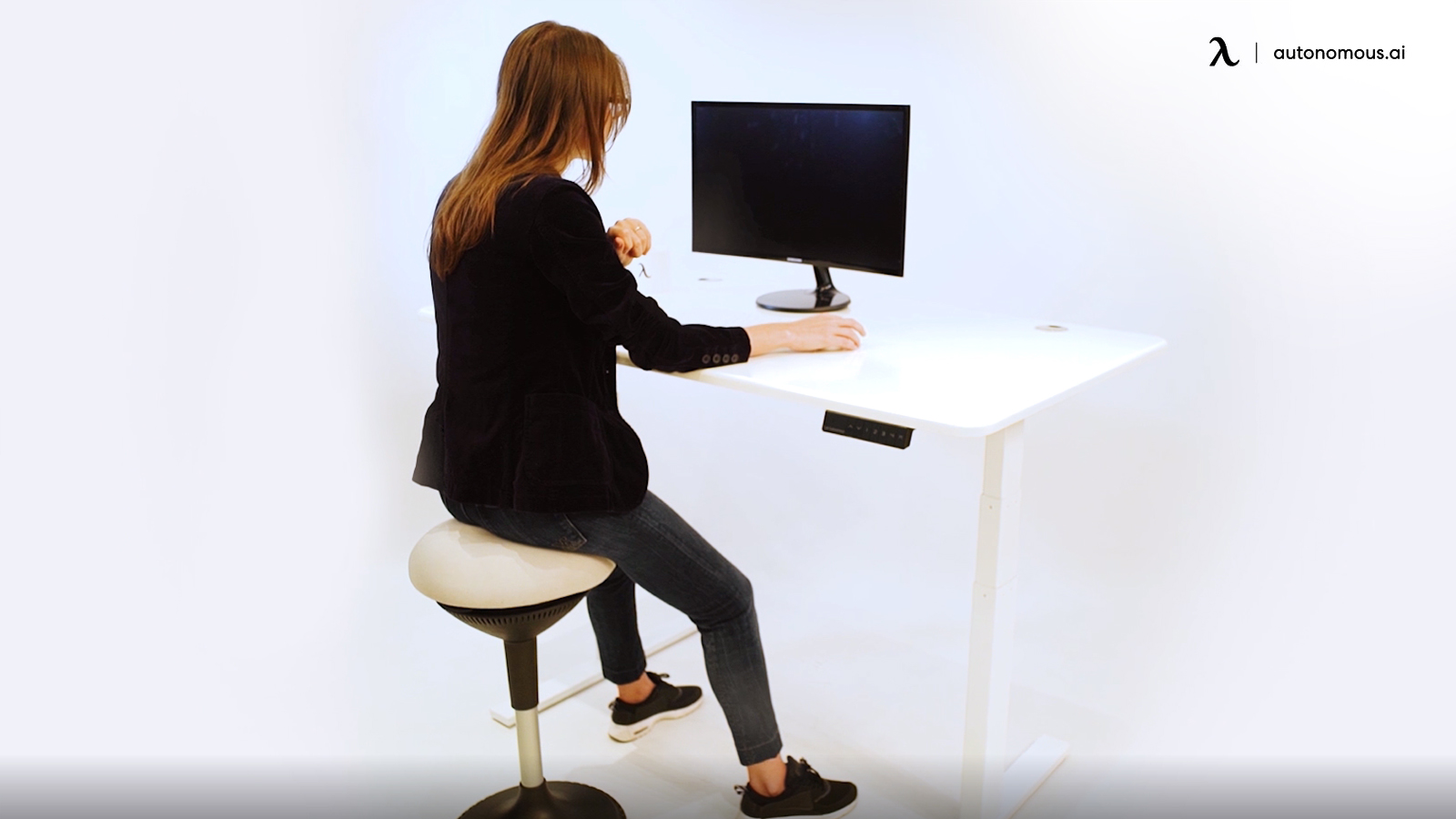
How Does Active Sitting Work?
All of that is great as a theory, but how does it work in practice? What is active sitting, and how do you practice it properly?
The answer is: you get a different chair. In particular, what you want to do is get an ergonomic stool like this one. There are other options out there, but some – like yoga ball chairs – don’t work for active sitting.
If you’re thinking to yourself “that looks uncomfortable”, then you have the right idea, in a sense. The point is to be just a little bit uncomfortable. When you’re laying back or sitting down, you can slouch and relax. That lets your core muscles disengage, and leads to all of the sedentary problems we’ve mentioned above.
With an active sitting stool, you’re constantly in motion. If you want to reach for something, you need to adjust your balance, which engages muscles in your core. If you want to sit up straighter, you adjust your balance, engaging those core muscles. If you slouch, you feel more uncomfortable doing it and adjust your posture. Do you see the pattern?
This form of active sitting is also very good for people who have excess energy, ADHD, or tics that commonly distract and disrupt from work. You know the type; the leg bouncing, toe-tapping, wiggling, and other motions that consume excess energy but also take away focus and – in some cases – can be distracting or disruptive to coworkers.
When you’re balancing on a precarious wobbling stool, the energy and motion are both transferred into keeping yourself balanced. It’s an activity, hence the name. Your mind handles this balance adjustment subconsciously, so it’s not as distracting as a constantly bouncing leg or tapping toe.
A good ergonomic stool has a height adjustment to it the same way an ergonomic chair does. It works when you’re in a sitting position, keeping you moving with micro-adjustments and engaging those core muscles. It also works when you stand to work at a standing desk, giving you a perch to lean on for a break, or a resistance to use to adjust your posture.
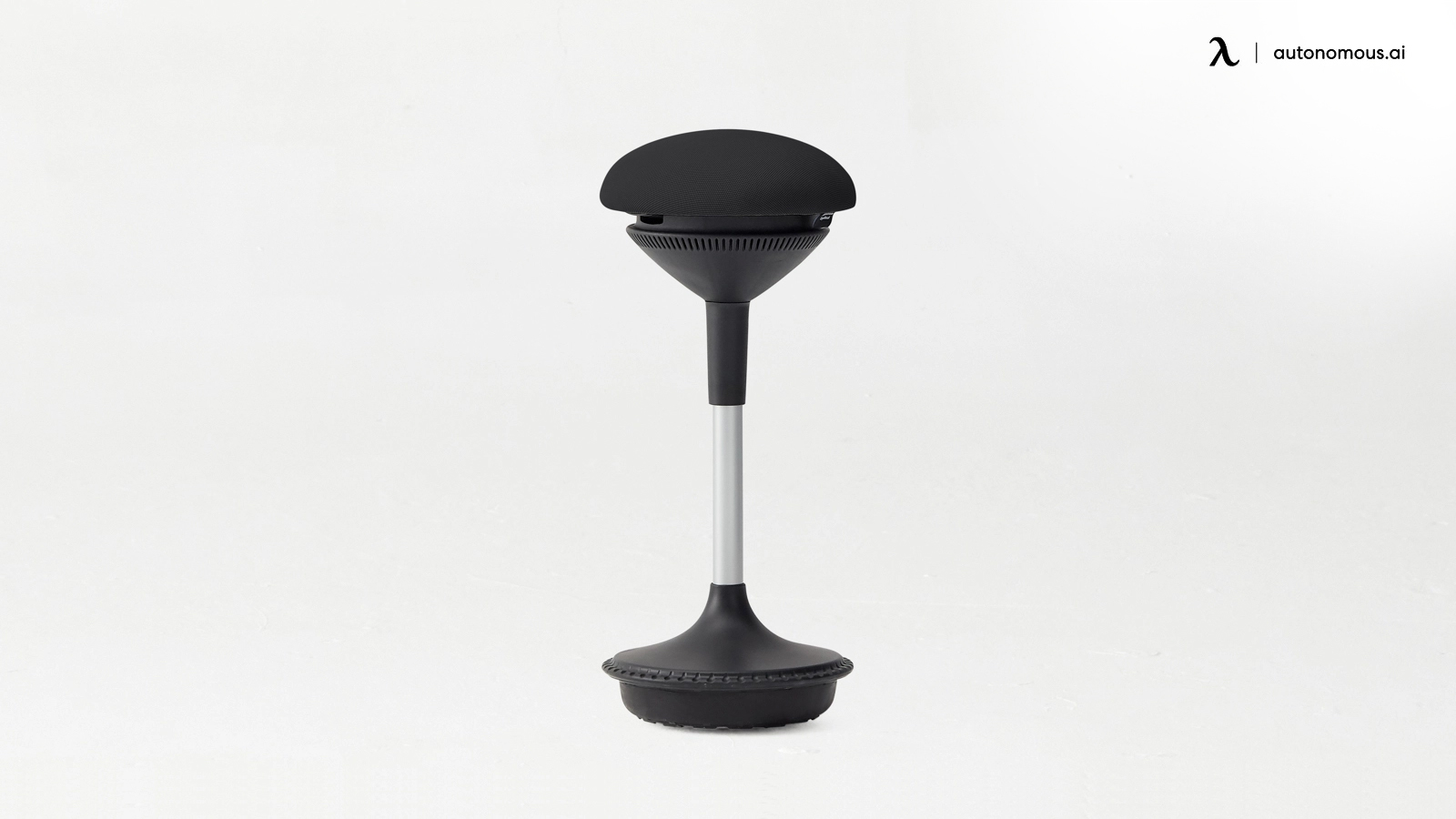
Why You Should Try Active Sitting
Active sitting has a wide range of benefits, some of which you might not even think about.
- It promotes core muscle strength.
It’s not exactly a replacement for dedicated core exercises. However, what it does is prevents you from relying too much on a particular set of muscles to the exclusion of others. When you maintain one posture, your body relies on a handful of muscles and tendons to keep it in place. The others relax, which can, over time, weaken them. Active sitting reduces that reliance on just a few core muscles and tendons and instead spreads the burden out over many.
- It promotes a healthy spine.
The spinal column is made up of vertebrae and discs. The discs are made of a rubbery substance and a fluid that needs nutrients to stay healthy. The primary mechanism those nutrients are distributed by is motion. You can think of it like a sponge; when you move, some discs are compressed and release liquid, and others expand and absorb it. This liquid circulates nutrients and keeps your spine healthy. This process can also help minimize compression injuries and hernias that cause back pain.
- It helps improve posture.
Many people are not used to having to adjust their posture throughout the day. Relying on a chair back can instill bad habits into your posture, and that can compound various back injuries, as well as injuries to the hips, neck, shoulders, and wrists. Active sitting forces you to constantly adjust your posture to a more comfortable position, eventually leading you to an ideal posture.
- It encourages blood circulation.
When you sit in a sedentary position for a long period, your body starts slowing down systems like your metabolism and circulatory system. This can lead to a wide variety of problems, from weakness to deep vein thrombosis and everything in between. Active sitting encourages various muscles to constantly adjust and engage, which forces circulation and keeps your blood pumping.
- It improves concentration.
Using an active sitting stool helps keep you focused on your tasks, and not on bodily tics like bouncing legs or tapping feet. It also removes the temptation to continually make adjustments to various levers and dials on your chairs. While the effects may vary depending on the person and the situation, some studies have shown better cognitive performance among people who use active sitting techniques.
- It can burn calories.
One of the biggest problems with a sedentary lifestyle is the lack of exercise to burn calories. Active sitting helps mitigate that by encouraging motion and muscle usage, which burns calories. Now, this isn’t going to be some miracle weight loss program. The calories you burn will number in the 10s, not the 100s or 1,000s. You’re not going to shed the pounds through active sitting. Still, every little bit can help contribute to passive metabolism, and active sitting accentuates existing dietary and weight loss programs.
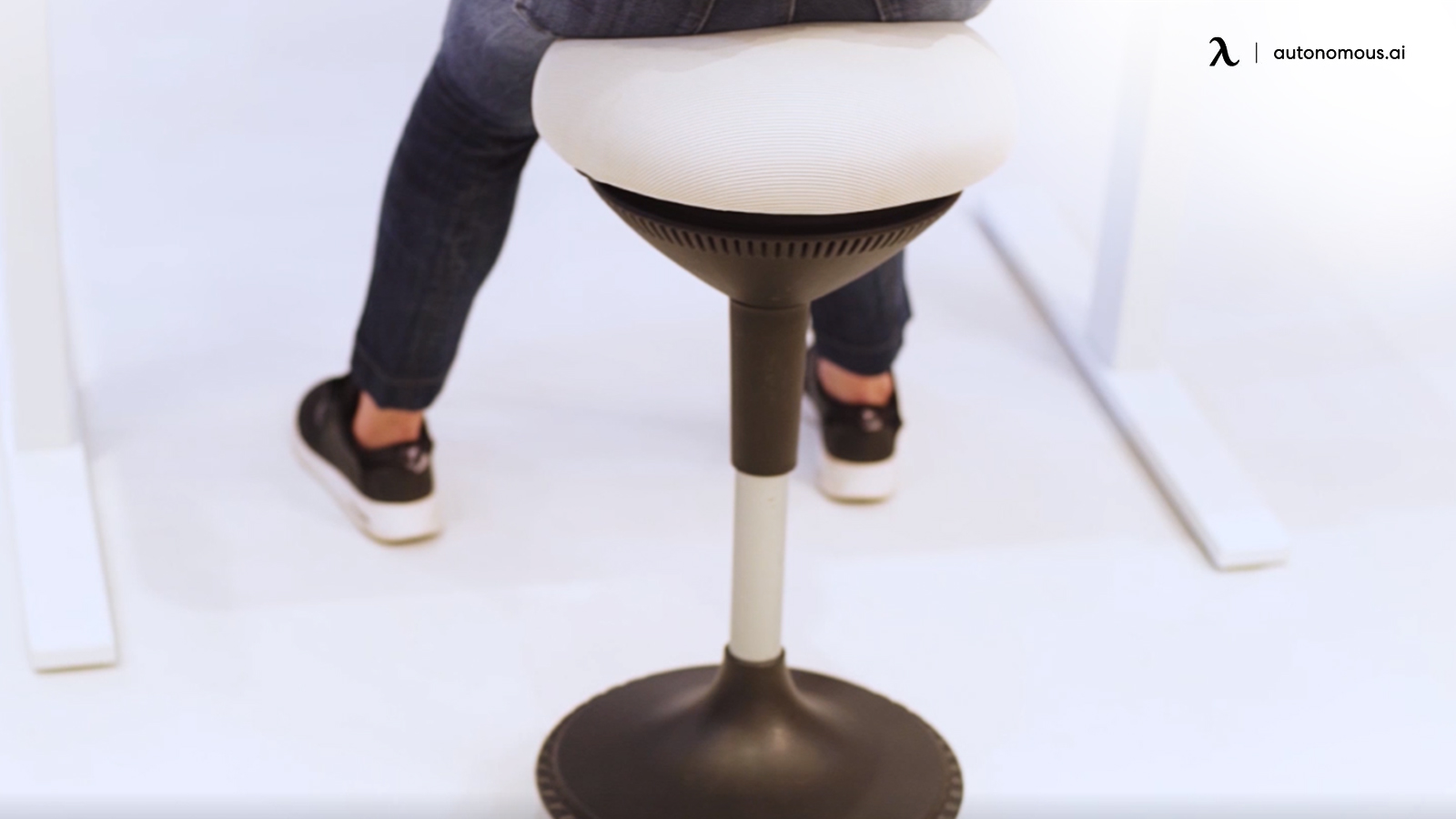
You can make active sitting a little better by augmenting it with a few basic exercises throughout the day. Some simple exercises include:
- Leg lettering. Lift one leg off the ground and draw the letters of the alphabet with it, then put it down and repeat with the other leg.
- Knee lifts. Periodically stretch and lift a leg so your knee reaches towards your chest, hold, and let it back down.
- Stretches. A wide range of stretches, both seated and standing, can help a lot with pain in muscles. Pay particular attention to specific muscles that ache.
- Walking. Every 30-60 minutes, take a break to get up and walk around. This can help with circulation and joint pain and can give you a good excuse to do more intense stretches or exercise.
You can also consider using active sitting in conjunction with a sit-stand conversion desk to get the benefits of both types of adjustment.
What to Look for in an Active Sitting Stool
If we’ve convinced you, you should have to look no further than our stools for an ergonomic option.
If you want to shop around, though, here are some of the important features to look for before you select a sitting stool:
- Adjustable height. If you have any plans to use a sit-stand conversion desk, an adjustable height that transitions between a sitting position and a standing position is arguably one of the most important features. Some stools have a small adjustment for sitting but don’t extend fully to a standing position.
- Cushioned seat. You don’t have to worry about back support, but that means even more of your weight is going to be relying on the pad of the seat. You want a plush enough cushion to keep you as comfortable as possible while using your active sitting device.
- Contoured seat edges. Some stools have flat tops and hard edges, which works if you’re sitting on them like a bar stool, but not for an active sitting stool. A hard, upturned edge can dig into the backs of your thighs, cutting off circulation and causing problems.
- Non-slip rubber foot. Active sitting is, by definition, active. You’ll constantly be making small movements, and that can get very dangerous if your stool doesn’t have a firm grip on the ground. If it slides out from under you while your weight is on it, you’ll fall, and that’s not good for anyone involved.
- Weighted base. For the same reason as the non-slip foot, you want your stool to have a weighted base. This helps keep the center of gravity low and in the correct position, minimizing the chances of the stool moving when you don’t want to move it.
Keeping all of that in mind, it’s easy to see at a glance when a stool meets most of the requirements. For the rest, simply check the weight and height adjustments, and make sure the stool is suitably non-slip.
/https://storage.googleapis.com/s3-autonomous-upgrade-3/static/upload/images/product/galleries/22.59-ErgoStool_B-1584091802842.jpg)
Autonomous ErgoStool
| Dimensions | 13”L x 13”W x 25” - 35”H |
|---|---|
| Seat dimensions | 13”L x 13”W |
| Seat height | 25” - 35” |
| Range of motion | 30° |
| Adjustability | Seat height |
| Materials | Polyester fabric with molded foam interior and durable nylon plastic frame. |
| Certification | UL 2818 - 2013 Gold Standard for Chemical Emissions for Building Materials, Finishes and Furnishings. |
| Colors | Navy Blue, All Black, Cool Gray, Evergreen |
| Weight capacity | 270 lbs |
| Item weight | 22 lbs |
| Shipping dimensions | 53”L x 37.5”W x 33”H x 26 lbs |
Conclusion
Active sitting is a simple yet effective way to counter the negative effects of prolonged sedentary work. By engaging your core muscles, promoting better posture, and encouraging movement, it helps reduce back pain, improve circulation, and boost focus. Whether you use a wobble stool, a balance ball chair, or a kneeling chair, the key is to stay dynamic rather than static. When choosing an active sitting stool, look for ergonomic design, adjustable height, and stability to ensure both comfort and functionality. Incorporating active sitting into your daily routine can make a noticeable difference in your overall well-being, helping you stay healthier and more energized throughout the workday.
.svg)

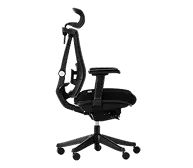










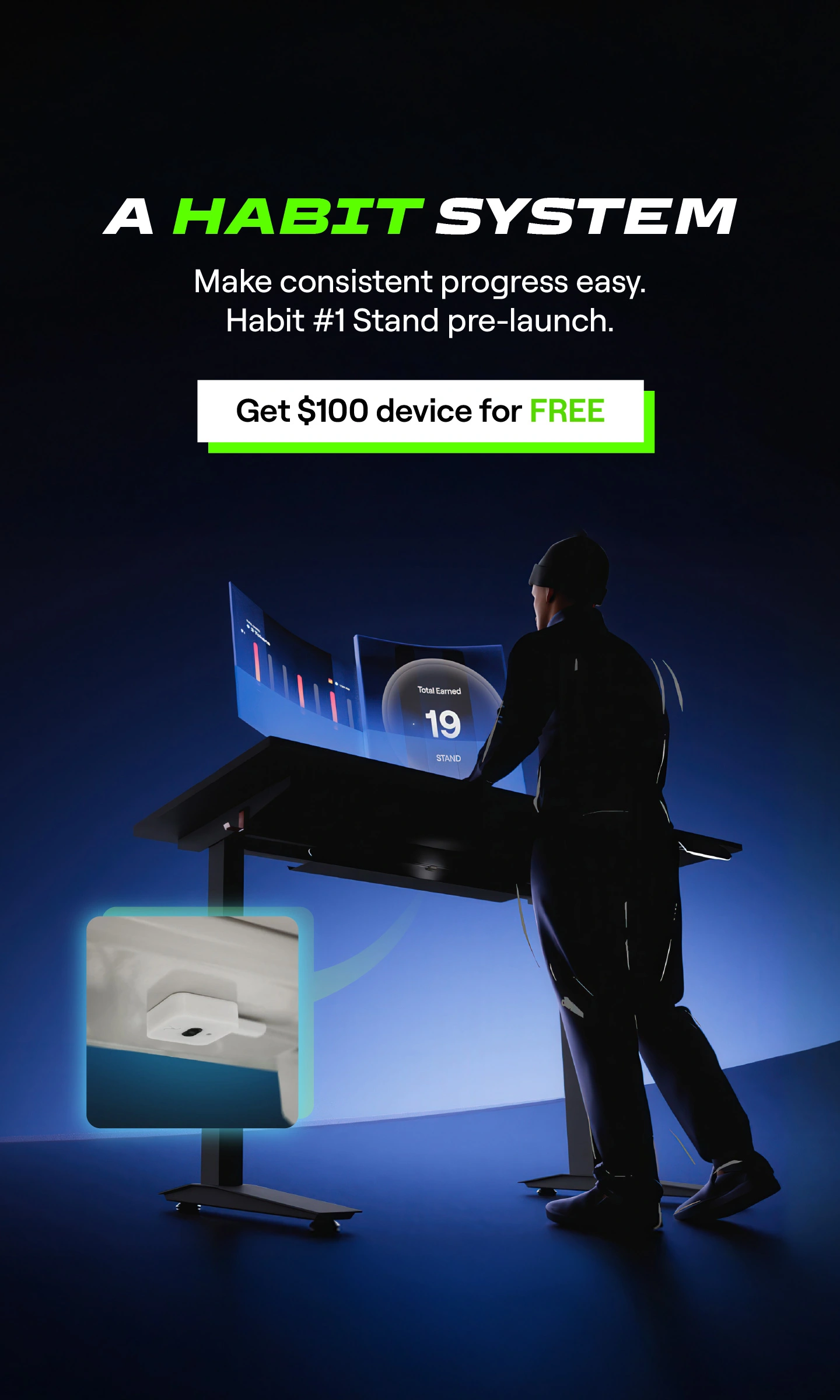
.webp)


